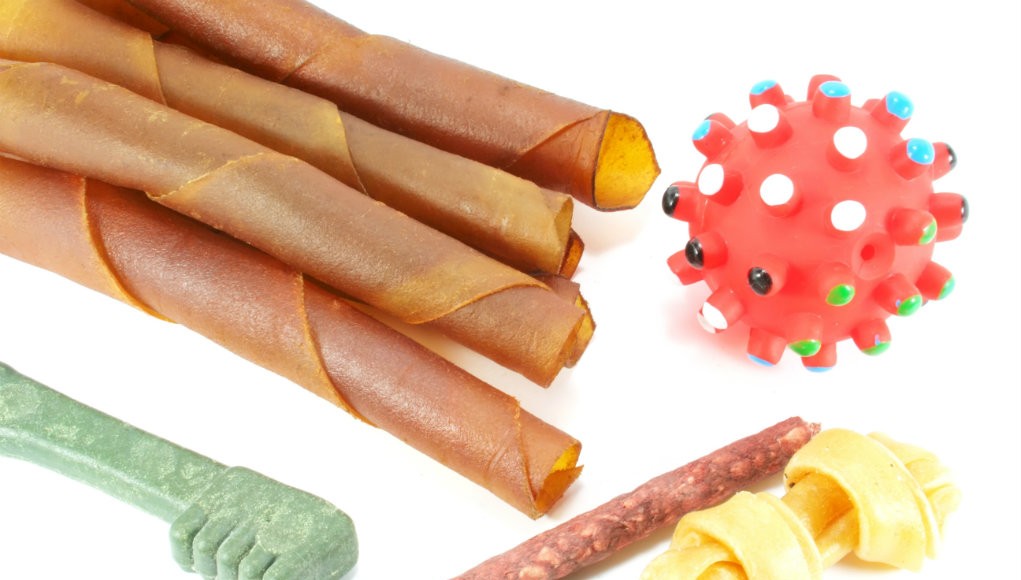 Another Sunday is in the books! It was a chilly day here in Maine, and we spent most of the afternoon working on behavioral training with our 4 month old puppy. Since I've been a dog owner for many years, I often get asked what I think are the must-have supplies for dog owners. I know what my opinion is based on my own personal experience, but I guess that working with our dog today made me curious about what other professionals in the pet industry think. I decided to spend the afternoon looking into it.
Another Sunday is in the books! It was a chilly day here in Maine, and we spent most of the afternoon working on behavioral training with our 4 month old puppy. Since I've been a dog owner for many years, I often get asked what I think are the must-have supplies for dog owners. I know what my opinion is based on my own personal experience, but I guess that working with our dog today made me curious about what other professionals in the pet industry think. I decided to spend the afternoon looking into it.
Did you have a chance to read last week's column about sustainability in the pet industry?
With a quick Google search you can find thousands of articles about pet supplies. You could spend millions of dollars on supplies for your dog if you had unlimited funds. Unfortunately, none of us can do that, so how do you decide what to buy when you adopt a puppy or dog for the first time?
My advice is to start small.
Buy only the essentials in the beginning, and then as time goes on you can begin to collect more supplies. Adopting a dog is a large expense, and there is no need to go overboard buying a bunch of supplies and accessories that you don't need. If you're looking for some great information on what products you should start out with, I've found some expert advice on the must-have goodies you'll want to invest in.
Professional Dog Trainer Diane Rich recommends some products in this blog and explains why you will need each piece of equipment. I like that she includes some products that most pet parents don't typically think about until they really need them, like chewing deterrents and odor neutralizers.
- Household products that just mask the odor will not trick the super nose of our canine companions. Your pup WILL easily find the most recent accident. A neutralizer should help if you get to the accident as soon as it happens, especially if the accident is on carpet vs. flooring.
Woman's Day magazine wrote a great article that gives some excellent advice, tips and tricks for first time dog owners. Their list includes a lot of the traditional supplies that you'll need including dog beds, food and water bowls and chew toys. The article describes the basic essentials that you'll need, but also explains some of the other options that are on the market.
- Two plain, ceramic bowls are the only pet supplies you will need to adequately feed and water your new dog. However, you can go high-tech or fancy by purchasing water fountains or elevated bowls. You can even customize your dog's water and food bowls by monogramming them.
If you're adopting an older dog that is already trained, you may not need as many items as you would if you were adopting a puppy. House training, behavioral training and crate training require a lot of supplies as Wendy Wilson tells you on celebrity pet trainer Cesar Milan's blog.
- A must for any puppy owner, crates and containment devices keep your new pal in a confined area where you can monitor and housetrain him. You will need a dog crate or carrier, and an exercise pen, playpen, or gate when you bring your pup home.
Of course companies that specializing in making dog products will also have an opinion on the must-have supplies that pet parents will need. Surprisingly, Nylabone's website has a great blog post about supplies that doesn't push their products at all. It's a detailed list that includes unique, yet helpful items like pet gates, attire and ID tags, which aren't on many of the other lists that I found.
- Consider the weather in your area. If it’s cold and your dog shivers, consider getting him a dog sweater or jacket. A constantly chilled dog is neither a healthy dog nor a well-exercised dog. If you live in a warm environment, consider buying a “cool coat.” This special cooling coat or vest is made of special fabric that retains moisture and cools through evaporation for up to four hours before it needs to be re-moistened.
In a more whimsical blog that is very entertaining to read, professional dog trainer Sharon Wachsler talks about the products that she has had experience with over the years. She explains which ones are must-haves and which can wait until a little further down the road. Wachsler also gives her personal recommendations in case you're looking for suggestions from a professional.
My favorite piece of this blog is the end. Wachsler makes it clear to her readers that it is just as important to take care of their equipment as it is to pick out high quality products. Why spend the money on all of this dog supplies if you're not going to take care of it and you're going to end up buying replacement products in a year or so?
- The only thing that matters just as much as, if not more than, the quality of your grooming equipment is the maintenance of them. No matter how good your scissors are, they will dull with use. Shears need to be cleaned and sharpened regularly. The same is true of clipper blades. Find a professional sharpener of dog-grooming blades or shears and get them sharpened every few haircuts or whenever you first notice a reduction in performance.
Veterinarians are a great resource when it comes to figuring out what you'll need for your new addition. They know what works and what doesn't. They talk with hundreds of different pet parents on a regular basis and work with all different sizes and breeds. Your vet will surely have some great information for you.
I've included Dr. Sophia Yin's advice in my columns before, and for good reason. Her blogs are always easy to read and to the point. She's written a great blog about the supplies that all dog owners should have from her professional veterinary point of view. I love that Dr. Yin also includes some information about the common items that many pet parents think they need, but in reality they are just a waste of money.
- You’re getting a dog and it’s time to go shopping, but what to get? How many toys, which leashes are right? Does he need a harness, a collar or a bed? You can spend hundreds of dollars on supplies, but will you get the ones you really need? Here’s my list of the seven things all dogs need for a behaviorally healthy life.
With technology being as prevalent in our society as it is, there are undoubtedly a few dog-related smartphone apps that pet parents should consider downloading. This article has compiled a list of great apps for pet parents. It includes apps that will track your puppy's growth, activity apps, and even an app to help you budget your money when it comes to spending on your pet.
- Raising a puppy isn’t cheap, and you probably want to keep track of your budget so you can make sure that you are covering all the bases. You may be asking: What could I possibly need to keep track of? There’s the toy allowance, the food bill, the clothing (leashes, collars, booties, etc.), the health insurance, the veterinarian (vaccinations, checkups, etc.), the sitter and/or walker, the groomer, the trainer, the candle stick maker … you get the idea.
All of these puppy supplies will take up plenty of room in your home, but have no fear, the Iheart Organizing blog has you covered. Author Jen has an entire blog post dedicated solely to organizing pet supplies, and it has some great tips!
- I used an old cookie jar and mason jar along with some decorative labels and now the pooches have an instant treat station. By keeping their treats in a place that is out in the open, we are more likely to reward their oh-so-good behavior more often. And the labels ensure the whole fam knows to do the same {and not attempt to eat a puppy treat from the cookie jar!}.
It's easy to get carried away when buying dog supplies, but we all have to make some choices to keep our budget in check. I'd like to hear about your favorite must-have items too! Please share your picks in the comment section below and tell us why you made the selections that you did.













